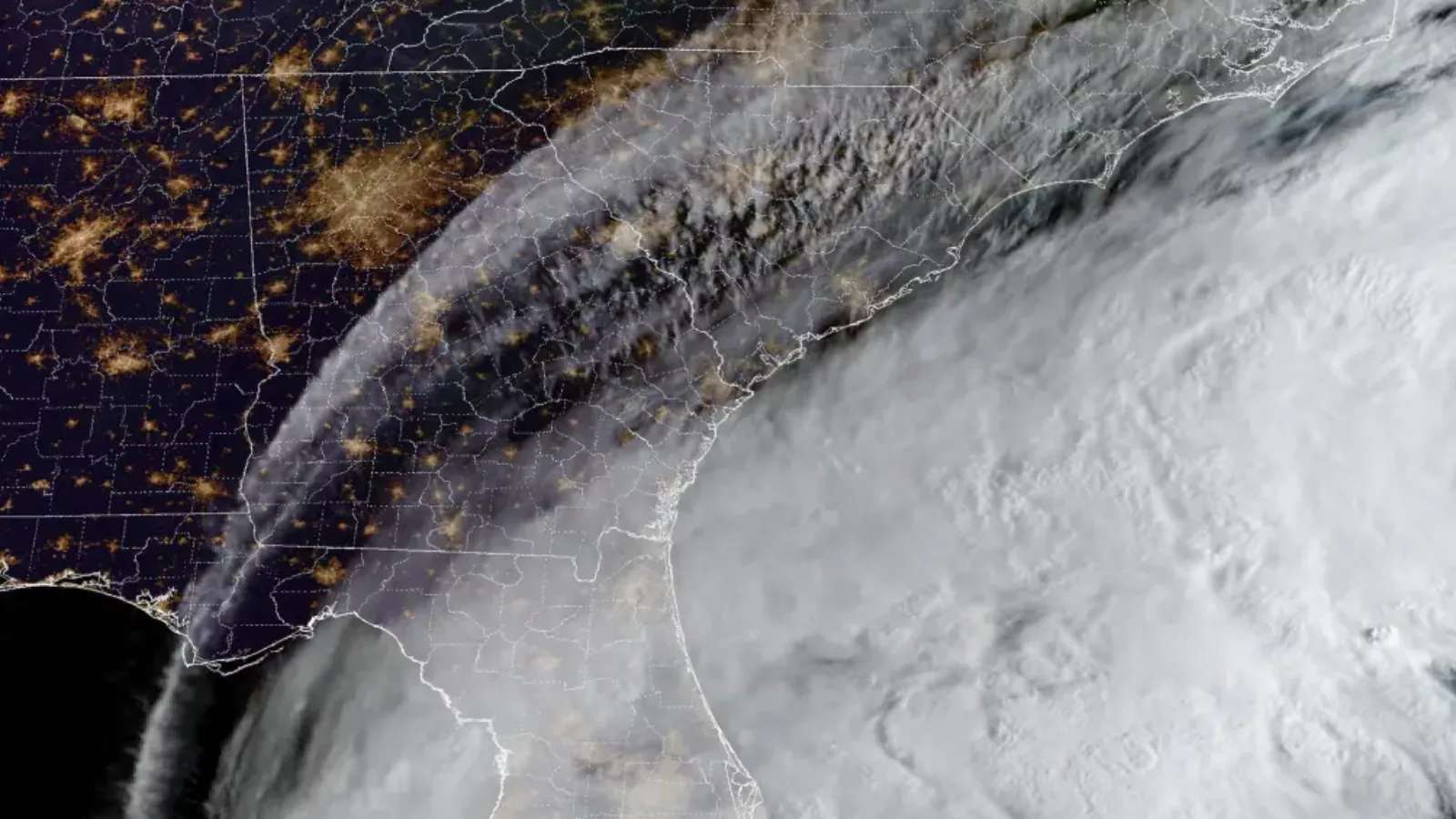Horrifying satellite images show Hurricane Ian as it approaches Florida after ravaging Cuba. 2.5 million Floridians have been ordered to evacuate as the storm has been upgraded to a category four storm, with top speeds reaching up to 155mph so far and likely to increase to a category 5. Experts believe the storm could cause 12-foot high tides and as much as 18 inches of rainfall.
NY POST: Satellite images show ‘apocalyptic’ Hurricane Ian approaching Florida
Lee Brown; September 28, 2022
Daunting satellite images show bolts of lightning sparking around the massive, swirling eye of Hurricane Ian — as the “apocalyptic” storm approaches Florida Wednesday after already knocking out power in Cuba.
The timelapse by the National Oceanic and Atmospheric Administration came as more than 2.5 million people in the Sunshine State have been urged to evacuate before the eye is expected to hit there late Wednesday.
Other images from space showed the massive storm cutting an unmissable swath across the globe as it moved through the Caribbean Sea.
“Air Force Hurricane Hunters find Ian has strengthened into an extremely dangerous category 4 hurricane,” the US National Hurricane Center in Miami said at 5 a.m. Wednesday.
It is “expected to cause life-threatening storm surge, catastrophic winds and flooding” across Florida, the advisory warned.
“Very recent data from an Air Force Reserve Hurricane Hunter aircraft indicate that the maximum sustained winds have increased to near 140 mph with higher gusts … Ian is forecast to approach the west coast of Florida as an extremely dangerous major hurricane,” it warned.
While the edge will hit early today, “the center of Ian is forecast to move over central Florida tonight and Thursday morning and emerge over the western Atlantic by late Thursday,” the hurricane center said.
“Catastrophic wind damage is likely where the core of Ian moves onshore,” it stressed.
A hurricane warning covering roughly 220 miles of the state included Fort Myers as well as Tampa and St. Petersburg, which could get their first direct hit by a major hurricane since 1921.
Forecasters said the storm surge could reach 12 feet (3.6 meters) if it peaks at high tide. Rainfall near the area of landfall could top 18 inches.
Parts of Georgia and South Carolina also could see flooding rains and some coastal surge into Saturday. Georgia Gov. Brian Kemp preemptively declared an emergency, ordering 500 National Guard troops onto standby to respond as needed.
The storm’s slow, daunting approach to the US came as scenes of destruction started emerging in Cuba, where the whole island of 11 million remained without power early Wednesday.
Those devastated included many of the country’s most important tobacco farms.
“It was apocalyptic, a real disaster,” said Hirochi Robaina, owner of the farm that bears his name and that his grandfather made known internationally.
Cuban President Miguel Díaz-Canel visited the affected region and vowed that it would rise “above adversity.”
Local government station TelePinar reported heavy damage at the main hospital in Pinar del Rio city, tweeting photos of collapsed ceilings and downed trees. No deaths were reported.
Authorities were working overnight to gradually restore service after the entire grid collapsed, according to a statement from Cuba’s Electric Union.
Florida Power and Light warned those in Ian’s path to brace for similar blackouts, saying there could be days without electricity.
As a precaution, hundreds of residents were being evacuated from several nursing homes in the Tampa area, where hospitals also were moving some patients.
Florida Gov. Ron DeSantis — who predicted “really historic storm surge” — has already activated 5,000 members of the National Guard ready for emergency response.
“The time to evacuate is now. Get on the road,” Florida’s director of emergency management, Kevin Guthrie, said during a news briefing on Tuesday evening.
Airports in Tampa, St. Petersburg and Key West closed. Disney World theme parks and Sea World in Orlando all closed ahead of the storm, with beach-going tourists also among the stranded.
“Unfortunately, all the hotels are full or closed, so it looks as though we’re going to be in one of the shelters,” British tourist Christine Williams said while prepping for the hurricane to hit Tampa.
Ian is also projected to be one of the costliest storms in US history because of the mass evacuations, school shutdowns and thousands of flight cancellations across the third-largest state, Bloomberg reported.
However, the biggest concern is “complacency,” warned US Federal Emergency Management Agency chief Deanne Criswell.
“We’re talking about impacts in a part of Florida that hasn’t seen a major direct impact in nearly 100 years,” Criswell stressed Tuesday.
